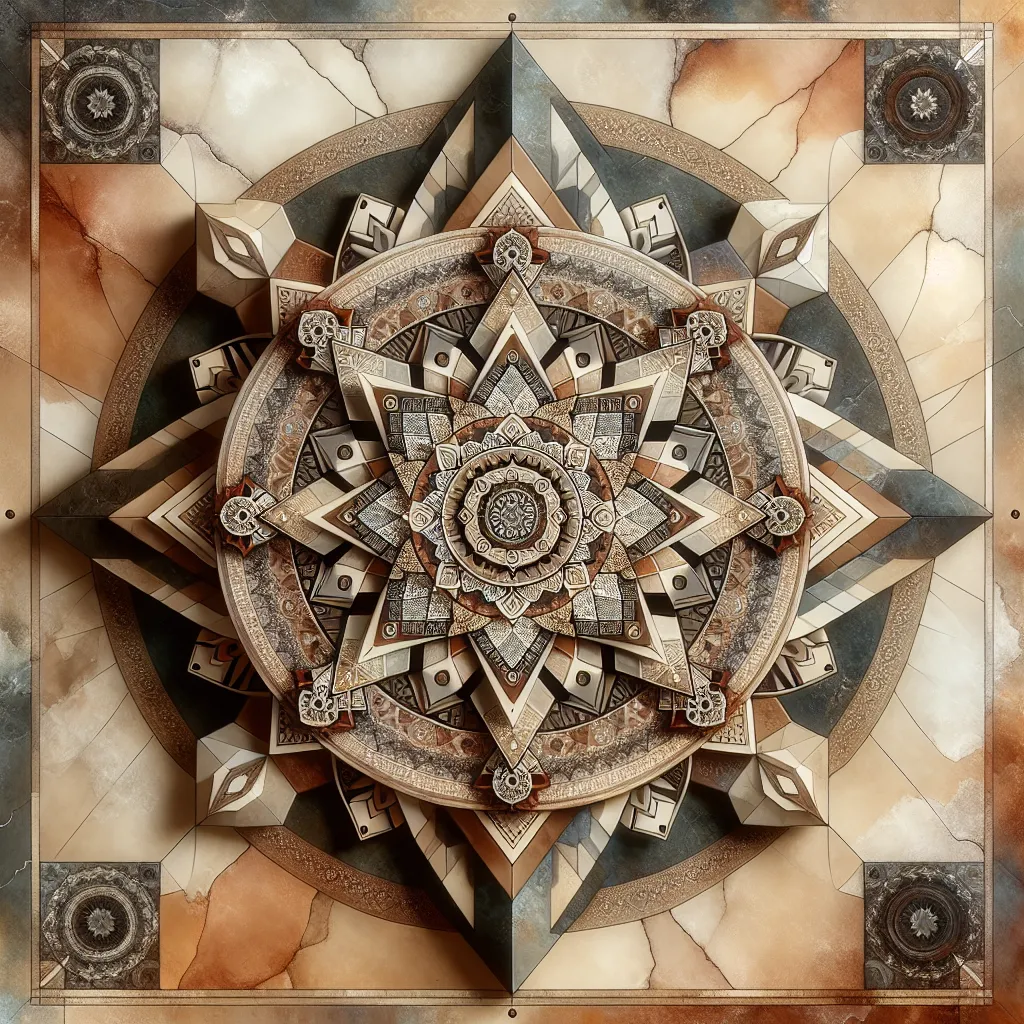
- Published on
- Authors

- Name
- You
The Symbolism of the Yantra: A Dance Between Geometry and Divinity
Introduction
Across the tapestry of human history, certain symbols have emerged from the human psyche that transcend linguistic and cultural barriers. Among such symbols are the Yantras, intricate geometric diagrams used in Tantra. These cosmic blueprints serve as both visual meditative aids and conduits of divine energy. A blend of mystical insight and quantum understanding can unveil the profound essence of Yantras, illuminating the unity of the universe.
What is a Yantra?
A Yantra (यन्त्र) is a Sanskrit term meaning "instrument" or "machine." In the context of Tantra, it represents a spiritual tool—a sacred geometric diagram used for meditation and rituals. Just as a scientist uses equations to unlock the secrets of the cosmos, a practitioner uses Yantras to unlock the secrets of their inner world.
Structure of Yantras
At their core, Yantras embody:
- Dots (Bindus): Represent the point of creation, the primordial universe in a state of potential.
- Triangles (Trikonas): Symbolize energy and motion. Upward triangles denote Shiva (masculine principle), while downward triangles represent Shakti (feminine principle).
- Circles (Chakras): Indicate cycles of time and unity.
- Lotuses (Padmas): Depict spiritual unfoldment akin to the blooming of a lotus.
- Squares (Bhūpath): Offer stability, a foundational structure representing the earth element.
The Intersection of Mysticism and Science
From the lens of quantum physics, the universe is a dance of particles and waves, a constant interaction of energies—much like the recurring patterns within Yantras. Here’s how the two domains converge:
Quantum Mechanics and Yantras
The Observer Effect
In the quantum realm, the observer effect suggests that the act of observation alters the state of the observed system. Similarly, the focused gaze during Yantra meditation transforms both the practitioner and the Yantra, creating a field of resonant frequencies that elevates consciousness.
| Concept | Quantum Mechanics | Yantra Meditation |
|---|---|---|
| Observer Effect | Observation changes the state of particles | Meditative focus transforms consciousness |
| Wave-Particle Duality | Particles possess dual nature (wave and particle) | Yantra embodies dual energies (Shiva and Shakti) |
| Quantum Entanglement | Distant particles affect each other instantaneously | Deep meditation connects the practitioner to the cosmic web |
Sacred Geometry and the Fabric of Reality
Yantras are living mandalas, diagrams reflecting the harmonic ratios of the universe. Here’s an exploration of their sacred geometry:
| Yantra Element | Symbolism | Scientific Parallel |
|---|---|---|
| Bindu | Source of creation | Big Bang singularity |
| Trikona | Energy and dynamic motion | Field lines and vectors |
| Chakra | Cycles and perpetual motion | Orbital paths in atomic structures |
| Padma | Spiritual unfoldment | Phyllotaxis patterns in nature |
| Bhūpath | Foundation and stability | Crystalline structures in matter |
Meditative Practices and Their Benefits
Meditation with Yantras transcends the ordinary realms of mindfulness. By focusing on the intricate patterns, practitioners harmonize their mind’s frequency with that of universal consciousness. Here’s a step-by-step guide to integrating Yantra meditation into your practice:
- Choosing a Yantra: Select a Yantra that resonates with your spiritual goals. Popular Yantras include the Sri Yantra, Kali Yantra, and Ganesh Yantra.
- Setting the Intent: Clear your mind and set a focused intention.
- Visualization: Gaze at the Yantra, allowing the patterns to merge with your mind’s eye.
- Mantra Recitation: Chant associated mantras to amplify the energy resonances.
- Inward Journey: Let the outward patterns guide you to your inner stillness.
Conclusion
The journey through the Yantra is both a scientific exploration and a mystical pilgrimage. These geometric wonders are more than art; they are the maps of the cosmic code written in the universal language of geometry. Embracing Yantras bridges the gap between the seen and unseen, the material and the divine, allowing practitioners to traverse the quantum fields of inner and outer realms.
So next time you encounter a Yantra, remember: you are not merely looking at it—you are engaging in a dance with the cosmos itself.
May your meditation always lead you to the divine geometry within.
